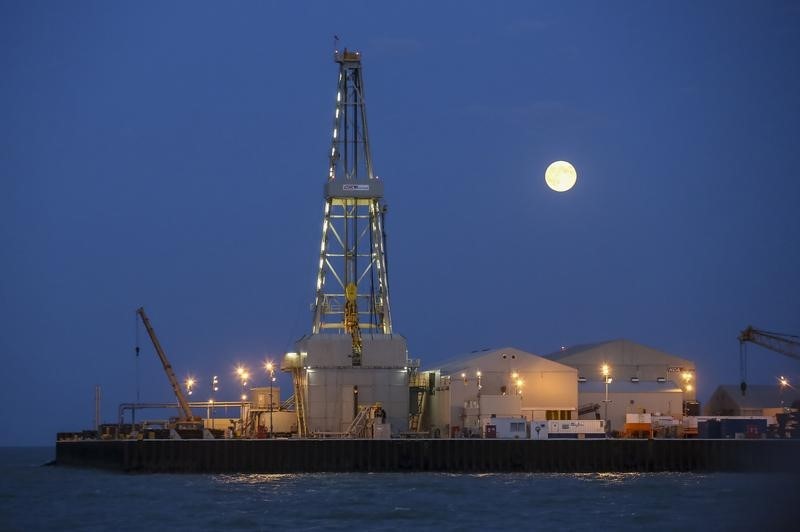By Henning Gloystein
SINGAPORE, Dec 19 (Reuters) - Oil markets were little changed on Tuesday, with unplanned outages and voluntary production restraint led by OPEC supporting prices, while soaring output in the United States capped crude.
U.S. West Texas Intermediate (WTI) crude futures CLc1 were at $57.22 a barrel at 0108 GMT, up 6 cents from their last settlement.
Brent crude futures LCOc1 , the international benchmark for oil prices, were at $63.34 a barrel, down 7 cents from their last close.
There has been very little price movement in recent trading, with Brent moving within a $63.00 to $63.91 per barrel price range since last Friday.
Some upward pressure was taken off Brent after a nationwide oil worker strike was called off in Nigeria, traders said. this, they said crude was generally receiving support from the ongoing Forties pipeline system outage in the North Sea, which provides crude underpinning Brent futures, as well as by voluntary supply cuts by the Organization of the Petroleum Exporting Countries (OPEC) and a group of non-OPEC producers including Russia.
As a result of the production restraint and disruptions, oil inventories are falling globally.
"OECD industry inventories declined by 40 million barrels in October to 2.92 billion barrels while global inventories decreased by 61 million barrels to 5,48 billion barrels. This clearly indicates that the market in 4Q17 is in material (1 million barrels per day) supply deficit," said researchers at Bernstein Energy.
"Global inventories now stand at less than 56 days (of demand), which is in line with the long-term average ... With OPEC's decision to extend cuts, we expect that OECD inventories will reach the 5-year trailing average (2.83 billion barrels) by 3Q18 and long-term average (2.7 billion barrels) by year-end 2018," Bernstein added.
Threatening to undermine the OPEC-led efforts to tighten the market is rising U.S. crude production C-OUT-T-EIA , which has soared by 16 percent since mid-2016 to 9.8 million bpd.
This means U.S. output is fast approaching that of top producers Russia and Saudi Arabia, which are currently pumping around 11 and 10 million bpd respectively.
U.S. shale production alone, which excludes large offshore facilities in the Gulf of Mexico, is expected to rise by 94,000 bpd in January, marking a 13th consecutive month of increases, the U.S. Energy Information Administration said late on Monday.
Overall, the EIA said it expected U.S. production to hit a record 10.02 million bpd in 2018, on par with Saudi Arabia and not far off top producer Russia, which pumps around 11 million bpd. GRAPHIC: Global crude oil supply, demand balance
http://reut.rs/2CRHqCH
^^^^^^^^^^^^^^^^^^^^^^^^^^^^^^^^^^^^^^^^^^^^^^^^^^^^^^^^^^^>
